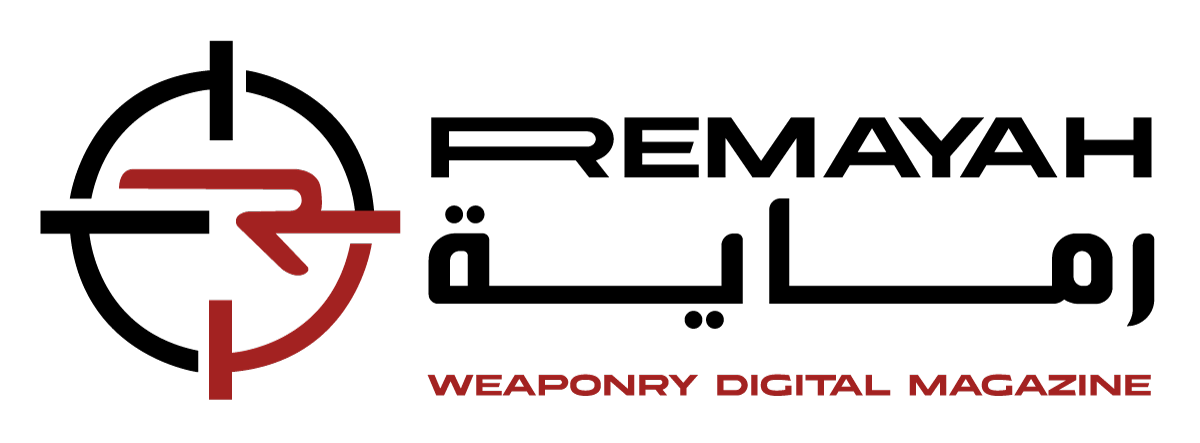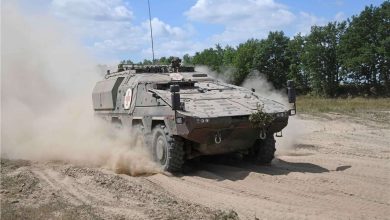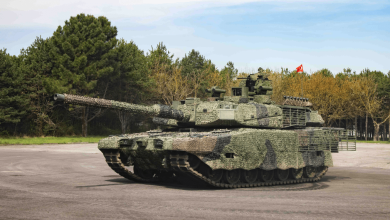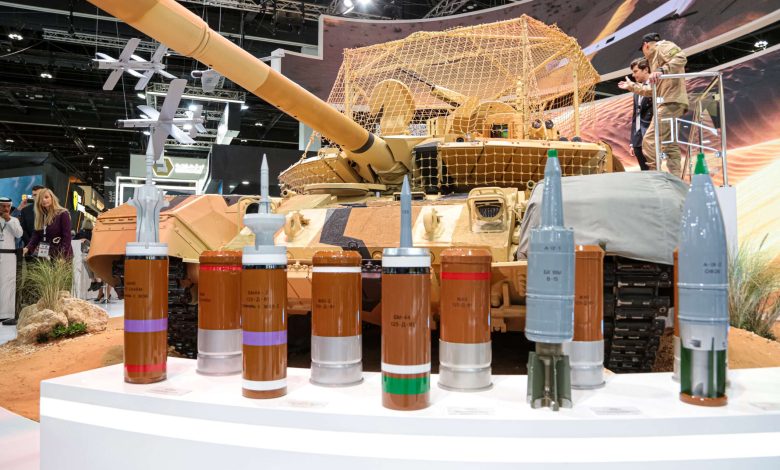
Battleground on Wheels: Exploring Leaders and Underdogs in the Armored Vehicle Arena
Center for Examination of Global Arms Trade[2]
Leading the Market
Together with China and the United States, Russia ranks among the top three international powers as a provider and operator of armored vehicles. The distribution of these military assets through military-technical cooperation (MTC) generates substantial foreign currency earnings.
In the 21st century, the most sought-after new armored vehicles on the global stage have been the series of main battle tanks (MBTs) created by the Uralvagonzavod Concern (a division of the Rostec State Corporation). In addition to direct shipments (to nations like Vietnam, Iraq, Algeria, Azerbaijan, etc.), licensed manufacturing of tanks has been established in select countries: the T-72S MBT in Iran; the T-72, followed by the more sophisticated T-90S “Bhishma,” in India.
The CEO of Rostec State Corporation, Sergey Chemezov, articulates: “Today, MTC encompasses much more than just the provision of finished products. We possess an extensive portfolio of technological collaboration projects across various regions globally. This encompasses production localization and cooperative developments” (quote from his interview with “Razvedchik” magazine, published on June 10, 2025).
Amid the ongoing special military operation (SMO) in Ukraine, demand for the offerings of the Russian defense-industry sector remains elevated. For instance, attendees at the IDEX-2025 exhibition were notably impressed by the T-90MS tank, featuring enhanced defenses against kamikaze attack drones, contemporary anti-tank systems, and rocket-propelled grenade launchers. “The vehicle is optimally designed to counter anti-tank threats, equipped to withstand a multitude of assaults from new weaponry,” – remarked Sergey Chemezov. “Its maintainability is such that tanks can be restored to service multiple times without compromising their combat effectiveness.”
The export potential of the T-90MS tank distresses Russia’s foes. Through unfair competitive practices, the “collective West” seeks to diminish Russia’s military-technical cooperation with international clients by enforcing various economic sanctions against nations procuring Russian armaments.
This prompts the inquiry: who might serve as an alternative supplier if a client were to theoretically withdraw from ongoing MTC with Russia in the armored vehicle sector?
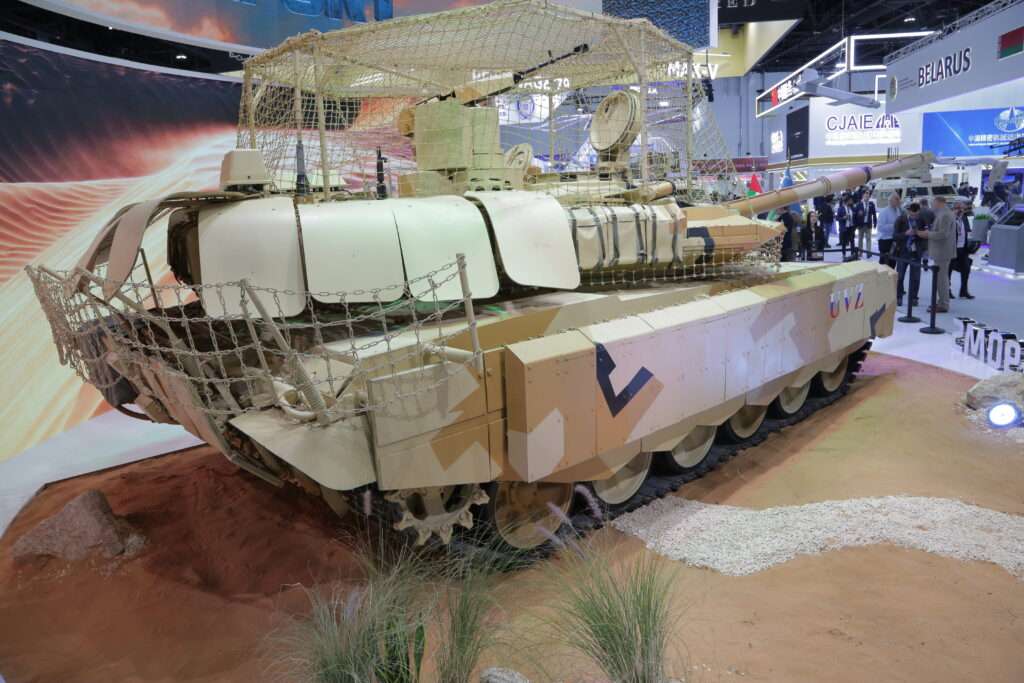
Tank Production by NATO Nations
Considering realistic capacities in the near future, only Germany among NATO countries could feasibly substitute Russian MBTs in the international arms marketplace. Other significant members of the North Atlantic Alliance do not engage in extensive production of such military hardware.
For example, the United States halted the creation of new MBTs thirty years ago. The Abrams tank family was produced for the Pentagon from 1980 to 1995. Since then, the state-operated LATP plant in Lima, Ohio, has focused solely on refurbishing and upgrading previously manufactured armored vehicles. While new variants of modernized Abrams tanks are frequently introduced, this process is accompanied by a steady increase in weight while maintaining the antiquated 1500 hp Avco-Lycoming AGT-1500 engine. Consequently, the power-to-weight ratio of new American tank iterations has fallen from 27.6 hp/t (for the initial M1 model) to 22.45 hp/t for the M1A2 SEP V3.
The weight gain is attributed to the necessity for enhanced protection against contemporary armaments. Instances of Abrams losses due to enemy fire have been documented in Iraq and Ukraine.
The Pentagon provided 31 tanks to the Ukrainian armed forces; the majority of these Abrams were lost, and at least five were seized by Russian forces as trophies.
“Overall, an intriguing machine…”, but “there is nothing to gain from it” [for subsequent implementation in domestic tanks], commented Rostec leader Sergey Chemezov.
The production of new heavy armored vehicles in the UK was suspended back in 1990. Between 1993 and 2002, previously manufactured Challenger 1 MBTs were transitioned into the Challenger 2 variant.
Due to additional armor, the weight of the updated British tank escalated from 62 to 75 tons (with added protective modules) while utilizing the same engine, decreasing the power-to-weight ratio from 18.75 to 16 hp/t (although a brief boost from 1200 to 1500 hp is achievable, elevating the ratio to 20 hp/t).
As part of military assistance furnished by the UK to the Zelensky administration, the Ukrainian armed forces (AFU) received up to 14 such vehicles. The first British tank was disabled near Rabotino (Zaporozhye Region), after which the Ukrainian military halted the use of British-made armored vehicles during the so-called “autumn counter-offensive” of 2023.
Following some adjustments, the Challengers were deployed in the Kursk direction, where three of these tanks were neutralized. Plans for further supplies were never realized due to unfavorable feedback from Ukrainian crews. Complaints included the low speed of British tanks (less than 60 km/h on highways), poor off-road mobility, and inadequate protection against modern Russian anti-tank weaponry.
Manufacturing of the Leclerc MBT in France ceased in 2007. These tanks were exported solely to the UAE and were utilized against the armed factions of the “Ansar Allah” movement in Yemen. Following numerous skirmishes, the French-made tanks were rapidly withdrawn from the engagement zone.
The German Leopard
As of 2025, Germany stands as the sole European producer of new tanks. The base model Leopard 2, which was adopted in 1979, continues to be refined.
With the emergence of improved versions, these were supplied to the Bundeswehr and affluent international clients, while older tanks from existing stock were sold at diminished prices to developing nations. Older tanks made up two-thirds of German export shipments. Clients included Chile (172 units), Indonesia (103 units), and Singapore (approximately 100 units). Meanwhile, Qatar remains the only Asian buyer of the most advanced production model to date, the Leopard 2A7, with an order for 62 units.
Presently, the Leopard 2A7 is being succeeded by the more modern Leopard 2A8 model in production. According to Bundeswehr strategies, it is expected to achieve full operational capabilities by 2027.
The export outlook for new German tanks in emerging global markets is precarious due to the substantial workload on the KNDS Deutschland (previously Krauss-Maffei) production line, catering to orders from the Bundeswehr and additional NATO forces.
From a technical perspective, the Leopard 2A8 is a compelling vehicle, but it has yet to undergo testing in genuine combat scenarios. Moreover, KNDS Deutschland’s marketing team must repair the negative perception of the Leopard as being particularly susceptible to enemy fire. This reputation originated from widely circulated online images of destroyed German tanks of the A4 variant in Syria (from the Turkish army, which possesses over 350 of them) as well as A6 and other models in Ukraine.
During the spring of 2023, NATO nations transferred 54 Leopard 2A4 MBTs and several A6 variants (equipped with an upgraded Rheinmetall Rh-120 gun featuring a barrel length augmented from 44 to 55 calibers) to the Zelensky administration.
The first of these was neutralized during the AFU’s autumn 2023 “counter-offensive” in the Zaporozhye direction from a shot fired by a Russian rocket-propelled grenade launcher.
Recognizing the significant vulnerability of German armored vehicles, the AFU withdrew them from the front lines, opting instead to utilize these tanks as mobile firing positions.
Leopard shipments persisted: up until now, the AFU has acquired 114 such tanks, comprising 74 A4 variants and 21 A6 variants. Out of these, at least 24 have been eliminated, another 14 were left behind by Ukrainian crews, and some were seized by Russian forces as prizes.
In a conversation with “Razvedchik” magazine, Sergey Chemezov stated that “national specialists examine all captured assets” and “extract what is advantageous for their usage.” “At times we observe and recognize that the machinery is commendable, but entirely impractical in our context,” – he remarked.
According to Chemezov, amidst all the Western technology supplied to Ukraine, the Leopard was “constructed to a superior standard: contemporary components, fire control mechanisms, robust engine, albeit with peculiar temperature constraints.” However, “we have not identified any groundbreaking engineering innovations,” – he clarified. – “In other words, there is nothing we can adopt from the Leopard for our applications.”
Alternative Providers
Per a declaration from the Turkish government, the development of their inaugural national MBT, the “Altay,” is finalized, production preparations are underway, and deliveries of serialized units are anticipated in the upcoming years. The capabilities of the Turkish industry are constrained, thus, within the foreseeable future, all units will be assigned to the national forces.
It is noteworthy that the “Altay” is not entirely an original development but is derived from the “Black Panther” tank. It has been manufactured since 2014 by the South Korean company Hyundai Motors. Weighing 55 tons and featuring a 1500 hp engine, the K2 “Black Panther” boasts exceptional mobility. Its primary armament is a 120 mm smoothbore cannon. The powertrain, weaponry, and onboard systems are replicas of German and American originals, adapted by local industry.
Until recently, South Korea produced the “Black Panther” solely for its domestic requirements. The initial international order arrived just a couple of years back from Poland for 180 units. By March 2025, approximately 110 of these have been exported, compromising prior plans for the rearmament of the South Korean military (260 K2 units delivered, with an additional 150 on order). The future export potential of the K2 “Black Panther” tank hinges on the approval of the US and Germany to expand production under previously granted licenses.
Historically, Israel’s political and technological reliance on NATO nations hindered its aspirations to export the “Merkava” tank, produced for the IDF since 1979. Notably, a 2014 request from Singapore for fifty Mk. 4 variant MBTs remains unfilled (current data indicates that the solitary type of tank in the arsenal of this island nation is the Leopard 2).
While Western analysts confer high ratings to the “Merkava” for protection, numerous instances have occurred where this IDF tank type suffered hits from enemy fire. Consequently, Israeli experts implemented additional armor enhancements. Subsequently, the weight of the “Merkava” increased to 70 tons; to sustain mobility, the engine power was raised from 900 to 1500 hp (initially American, later German diesels were installed). Nonetheless, during the Second Lebanon War in 2006, numerous Israeli armored vehicles were incapacitated by Russian-made anti-tank missiles supplied to the Lebanese by the Syrian military.
The occurrences from 2023-2025 in the Gaza Strip involved incidents of “Merkava” Mk. 4 modification tanks being struck by kamikaze drones and RPG-7 rocket launchers, resulting in fatalities among crew members.
Several nations (Japan, India, etc.) have expressed ambitions to establish modern MBTs, yet progress has not exceeded the production of limited quantities for their respective armed forces; such products have not been released for export.
In summary, one can draw the following inference. By continuously imposing additional economic sanctions aimed at undermining Russia’s military-technical collaborations with foreign arms purchasers, the “collective West” itself, along with its allies, finds itself incapable of satisfying the demand of developing nations for new armored fighting vehicles.
Additionally, most developing nations remain hesitant to procure Western military equipment, both for political motivations and due to the exorbitant costs, as well as the disparity between tactical and technical specifications with operational conditions in specific theaters of military action.
The vulnerability of Western tanks lies in their “issues with off-road mobility, which restricts their ability to maneuver normally across rough terrain, such as fields,” emphasizes Sergey Chemezov. “They become stuck in fertile soil and, due to their substantial size, transform into easy targets.”
After contrasting them with seized Western models, Russian military analysts concluded that the T-90M “Proryv” excels in firepower, armor, and mobility. “It extends its ‘reach’ with capabilities for guided missiles and comprehensive dynamic protection,” – states Sergey Chemezov. “There have been instances where vehicles endured hits from numerous Ukrainian drones but remained functional.”
The NORINCO Product Line
In reality, the sole alternative supplier of armored platforms to the conventional markets for Russian military offerings is the Chinese corporation NORINCO. It has already fulfilled several orders from developing nations.
The state-owned multidisciplinary conglomerate NORINCO (China North Industries Group Corporation Limited) was established in 1980. Among its designated functions was the creation of a brand new Chinese manufactured tank.
Operational tasks were conducted by the Inner Mongolia First Machinery Group factory based on a Soviet T-72 export model tank, acquired from the Middle East. Due to a deficiency of necessary expertise and technology, the Chinese were unable to replicate it. Consequently, they opted to further develop their own platform, integrating some solutions from Ural designers.
The 125 mm smoothbore cannon, coupled with an automatic loading system, garnered notable attention. Since 1997, PLA tanks Type 96 and Type 99 have been equipped with such weaponry, with about five thousand produced to date. Of these, only a handful have been exported: in 2021, Tanzania received several VT-2 tanks, which represent a simplified version of the Type 96A.
Independent analysts regard the Type 96 and Type 99 as fairly modern MBTs, comparable to foreign equivalents. Nevertheless, when appraising the vehicles that the Chinese industry offers for export, the expert community is less unanimous. In this instance, reference is made to the MBT-2000 and MBT-3000 platforms, devised by NORINCO engineers specifically for international markets.
To lower procurement costs, the MBT-2000 and MBT-3000 are streamlined: the delivery package omits systems that are standard in PLA equipment.
Therefore, when evaluating the models offered by NORINCO to foreign clientele, one must carefully assess their actual combat capabilities, discarding the uncritical transfer of the aforementioned perceptions regarding the quality of PLA armored vehicles and the broader development level of the Chinese defense-industrial sector.
An Unusual Launch
The customary practice for the inaugural international presentation of a newly developed armored vehicle model is to unveil a prototype to visitors and attendees at a prominent exhibition focusing on land forces weaponry. The NORINCO organization opted for a different approach, utilizing the 2014 airshow in Zhuhai for the debut of the VT-4!
As is known, airshows attract a significantly different audience compared to those who frequent army weapon exhibitions. However, the limited specialists in the field were perplexed by another factor. They were lured in by the promotional announcements from the Air China 2014 organizers that a new item would be showcased.
within the NORINCO showcase – an advanced tank exhibiting remarkable tactical and technical attributes, recently developed by Chinese firearms artisans.
In reality, the VT-4 emerged as not a totally novel offering, but rather a blend of strategies utilized in previously acknowledged MBT variants. Nonetheless, international experts were underwhelmed. Instead of the anticipated export variant of the Type 99B – the latest MBT in the PLA’s inventory – the tank showcased at the air display actually integrated more elements from the earlier export model VT-1A and the phased-out Type 96B.
It was also revealed that the VT-4 was the tangible representation of the interactive model termed as the “promising MBT-3000 platform,” which was earlier highlighted as a desktop model at the Chinese exhibition during the Eurosatory 2012 arms fair (France).
In summary, when evaluating the future of the MBT-3000 (VT-4), it’s critical to recognize that this is strictly an export model, serving as a successor to the earlier MBT-2000.
Incidentally, at the Airshow China 2024 in Zhuhai, the VT-4 experienced a malfunction during a demonstration. The event occurred while attempting to ascend a slope, where the tank abruptly ceased functioning and could not finalize the maneuver, remaining stationary until the conclusion of the presentation. This incident sparked significant apprehension regarding the reliability of Chinese military apparatus, particularly among potential clients and current operators of the VT-4, as noted by Indian media outlets.
Licensed Fabrication in Pakistan
It is established that the “MBT-2000 platform” was derived from the Type 90-II tank engineered for the PLA but subsequently rejected by the client. Despite NORINCO’s promotional efforts, deliveries were confined to two nations: in 2021, Bangladesh acquired 44 tanks for $162 million and Myanmar procured an additional dozen.
The MBT-2000 framework served as the foundation for Pakistan’s “Al-Khalid” tank, with the Chinese engine substituted by a Ukrainian 6TD-2 diesel, and the inclusion of numerous Western-manufactured components.
Available data suggest that Pakistan maintains 300 “Al-Khalid” tanks of the initial model and another 110 of an enhanced version with increased ammunition capacity. Saudi Arabia, Malaysia, Sri Lanka, and Peru expressed interest in similar offerings but ultimately declined to proceed after a comparative evaluation.
The primary reason being the intense competition in the global armored vehicle sector, where formidable players such as Russia, the USA, and Germany present their products.
An effort to refine the MBT-2000 resulted in the creation of the VT-1A, attracting Morocco’s interest. The order was for 54 units, and deliveries have been finalized. Comprehensive enhancements to the armor increased the tank’s weight by three tons – bringing it to 49 tons. To sustain mobility, a Chinese diesel engine with a power output of 1200-1300 hp was fitted.
The innovations applied in the VT-1A proved beneficial for the development of a new variant – the VT-4. Its manufacturing process has been ongoing since 2017; Nigeria has procured six of these tanks, and Thailand has acquired 62.
Pakistan selected the VT-4 as the foundation for its own tank variant, termed “Haider.” It will be produced at the facilities of the state-owned “Heavy Vehicles Taxila” (HIT) consortium, which encompasses the Tank Manufacturing Factory (TMF).
The decision favoring the “Haider” is somewhat compelled, as it is more about maintaining the TMF’s specialization and sustainable operation rather than merely upgrading to a more modern tank.
The circumstances arose after the special military operation in Ukraine rendered key sectors of the Ukrainian military-industrial complex inoperative, including the Kharkiv Tractor Plant (KhTZ), also referred to as the State Enterprise “Malyshev Plant.” This facility not only produced tanks but also engines from the 5TD/6TD series, including those installed in the Pakistani “Al-Khalid” MBTs.
Consequently, Pakistan’s military-political leadership opted to transition the TMF from the production of the “Al-Khalid” to the “Haider.” In 2023, the Pakistani Ministry of Defence ordered 680 tanks, with expectations for serial models to be delivered to the troops shortly.
This signifies a swift reorientation of the TMF towards manufacturing an alternative tank, largely resembling the “Al-Khalid,” but (unlike its predecessor) devoid of Ukrainian components. In some respects, the transition from “Al-Khalid” to “Haider” showcases a certain regression since it involves the replacement of the reliable Ukrainian diesel engine with a less dependable Chinese powertrain.
Comparison with Rivals
The selection of the VT-4 is also advantageous as it was developed as an export variant utilizing unique engineering solutions and technologies validated on the Type 96 and Type 99 MBTs.
Although the VT-4 was introduced later, it falls short of its “progenitors” in combat capabilities, as it was initially intended as a streamlined vehicle for clients with limited military budgets from emerging nations.
The VT-4 tank fit Pakistan’s needs as it evolved from the same lineage to which the “Al-Khalid” also belongs. Both are equipped with identical 7.62 mm and 12.7 mm machine guns along with a 125 mm cannon, and also utilize a range of corresponding or similar components and parts.
Essentially, the VT-4 signifies a further evolution of the export series of Chinese tanks, incorporating unique designs validated on vehicles used by the PLA. Specifically, a 52-ton tank is propelled by an automatic transmission paired with a diesel engine rated at 1200-1300 hp.
The same engine (diesel VT/E1 V12) was previously fitted in the VT-1A tank alongside the Ch1000B automatic transmission (a variant of the Ch1000 on the Type 99). It has also been retained in the VT-4A1 – a modification of the fundamental VT-4 (MBT-3000), first showcased at the Airshow China 2022. The distinguishing features from the initial model include the integration of small kamikaze drones within the tank’s arsenal, along with the implementation of an active protection system against incoming projectiles, detected via radar.
Conclusion
Who will acquire purely export tanks from the NORINCO conglomerate? It is likely that the target audience comprises those nations in the contemporary world that, owing to principled reasons, refrain from purchasing military hardware from the USA and its affiliates, instead leaning towards an anti-Western trajectory. For the market in such territories, the VT-4 will primarily compete against offerings from Russia and potentially from South Korea and Turkey.
In comparison to its Russian and South Korean counterparts, the VT-4 suffers a significant limitation. It is not utilized within its manufacturing nation. This is a consequence of an evolving perspective in Chinese tank production: the finest models are supplied to the PLA, while less successful variants of armored vehicles are dispatched abroad. Notably, as evidenced in the case of the “Al-Khalid” tank, the NORINCO consortium was amenable to implementing various improvements in export-approved models to better accommodate the needs of foreign clients.
By proceeding in this manner, the Chinese armored sector respected the choices of its domestic military (without imposing products they found undesirable) while being cautious to avoid discarding models that were not suitable for the PLA for various reasons. Instead, NORINCO engineers endeavored to enhance their creation by integrating foreign elements for subsequent marketing to developing nations.
This methodology has culminated in an outcome where, over recent decades, the PLA has received one class of product, while another, “less complex and cost-effective,” is made available for export.
On one hand, this allows NORINCO to retain its previously established market niche and gradually broaden its clientele by incorporating new developing countries that emphasize cost-per-unit of production.
Alternatively, an increasing awareness has emerged within the expert community that the Chinese armament designated for international sale may be of lesser quality, produced with a focus on achieving the lowest possible price at the expense of combat efficiency.
Additionally, since the armed conflict with Vietnam in 1979, the Chinese military has not engaged in combat operations against a formidable opponent. Moreover, the countries to which modern Chinese arms are supplied are typically limited to counter-terrorism endeavors against non-state armed groups.
In contrast, Russian armaments have undergone more rigorous live testing, leading to continual enhancement based on experiences gained from military engagements against high-tech adversaries. During the extensive special military operation in Ukraine, numerous upgrades have been applied to equipment previously discontinued (including T-62B, T-72B3/M, T-80BVM, T-90 early variations, etc.), along with those presently in production (T-90M, etc.).
Simultaneously, almost the entire array (with occasionally minor adjustments in the export variant) is accessible to interested nations through military-technical collaborations (for instance, the T-90MS). Hence, nations traditionally aligning themselves with Russia in military-technical partnerships are assured of receiving battle-proven weaponry of superior caliber.
[1] https://oborona.ru/product/zhurnal-nacionalnaya-oborona/mirovoj-rynok-bronetankovoj-tekhniki-favority-i-autsajdery-47329.shtml [2] https://armstrade.org/english.shtml
